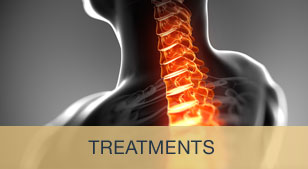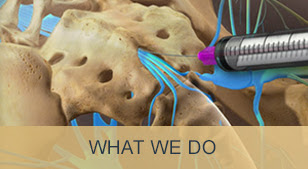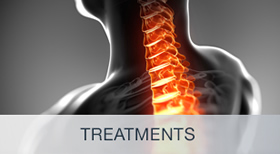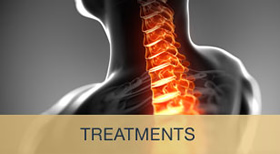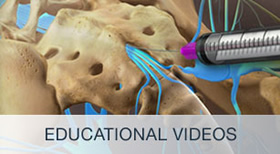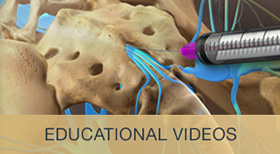Selective Nerve Root Blocks

Selective nerve root blocks are injections that help doctors diagnose the exact source of low back and leg pain arising from the compression and inflammation of one of the spine's many nerve roots .Local anesthetics with or without steroids are used. Selective nerve root blocks can relieve nerve root pain if the injection is delivered directly to the damaged nerve.
Sacroiliac Joint Injections
Sacroiliac (SI) joint injections, or blocks, help doctors diagnose and relieve low back pain caused by a problem in the sacroiliac joint, which connects the base of the spine (sacrum) to the pelvic bones and hip. Steroids, along with a local anesthetic are carefully injected into the SI joint to reduce swelling and pain. These can done 4-6 times per year.
Trial for Spinal Cord Stimulator
A spinal cord stimulator is an electronic device that is implanted in the body to help relieve chronic back, neck, arm or leg pain. Also known as a dorsal column stimulator, the device sends low electrical currents through wires placed near the spinal cord, that interrupt abnormal pain pathways, allowing patients to be pain free or have reduced pain.
This procedure is usually considered when other solutions, such as surgery, injections and medications, have failed. Before implantation, patients will often be asked to go through a trial period with an external device. The trial will test whether the patient has significant pain relief with the device. The patient will be allowed to test different programs and intensity levels. Dr. Campbell usually does a trial for 24-48 hours as an outpatient.
During the implantation of the permanent device, wires are fed with a needle and positioned on the spinal cord with X-Ray, as an outpatient. Placement of the device is dependent on the site of the pain. The device can be removed if necessary. The battery of the device must be replaced every 3 to 5 years. Proper care following the procedure is required and includes limiting movement and avoiding driving for the first week. If the trial was successful, the permanent stimulator should help alleviate pain.
Sympathetic Ganglion Block
A sympathetic ganglion block is a type of nerve block used in the treatment of severe or chronic leg, arm, groin, or face pain. It involves the injection of an anesthetic medication that will numb the affected bundle of nerves, a cluster known as a ganglion of the Sympathetic Nervous System. These nerves help the body react to stress and are responsible for the fight-or-flight response, a physiological reaction to situations perceived as being dangerous. The Sympathetic Nervous System also allows for increased cardiac funtioning and increased muscle blood flow ie.strenuous exercise. If peripheral nerves are damaged or compressed in any way, they can produce pain and other symptoms. The Sympathetic Nervous System can become abnormal and produce severe pain from light touch.
Part of the sympathetic nervous system, a stellate ganglion transmits signals to the upper body, including the face, neck, arms and chest area. A lumbar ganglion, on the other hand, sends signals to parts of the lower body, such as the leg or lower back. Damage to the nerves can result in pain in one or more of these regions. A sympathetic ganglion block involves the injection of a medication to numb the nerve and interrupt the pain signals it sends to the brain. It can be used in a diagnostic block to determine whether the source of the discomfort is due to damage to the ganglion nerves, as well as to effectively treat pain. Dr. Campbell does weekly injections until the pain is markedly decreased. He has had great success with these nerve blocks.
Percutaneous Discectomy
A percutaneous discectomy -also known as "disc decompression"- is a surgical procedure that removes part of an impinged intervertebral disc in order to relieve pain, weakness and numbness throughout the body. It is usually reserved for patients with severe symptoms that do not respond to more conservative treatments, and significantly affect the patient's quality of life. The discectomy procedure is performed under general anesthesia. An incision is made from which the herniated section of the disc is removed using a "decompresser."
For more information about Treatments, or to schedule an appointment, please call 484.468.1480.




